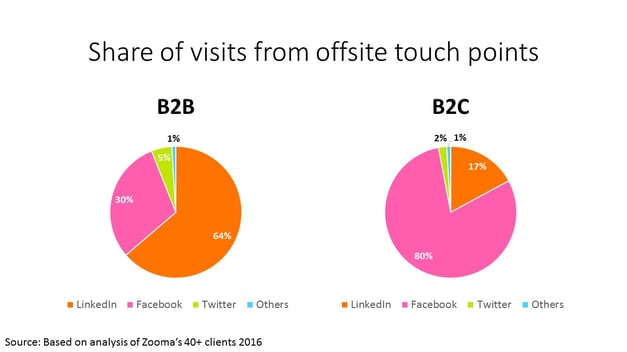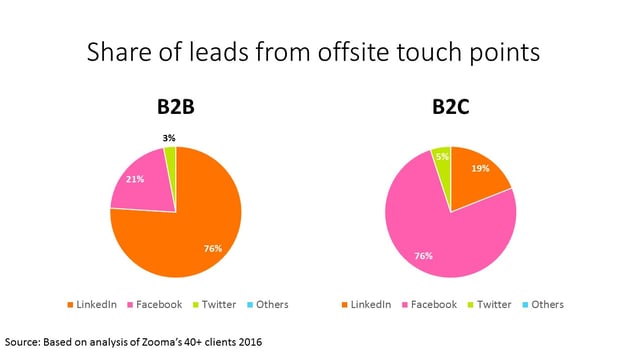There’s no doubt that offsite touch points (a.k.a. social media) are important for brands when it comes to reaching existing and potential target groups. However, there’s a lot of different offsite communities online and most companies have to make a choice where to invest time and effort. So which ones should you choose? In this post we analyse which offsite touch points have brought in the most visits and leads to our customers so far this year.
Most of Zooma’s customers operate primarily in Europe, North America and Australia so while this is far from a global study it at least gives us a pretty good view of offsite touch points commonly used in the western world.
By analysing traffic-to-site for Zooma’s 40+ clients that have adopted the Inbound methodology for their online presence in the first quarter of 2016 we get a pretty good picture of which offsite touch points are of most value for our clients.
Which offsite touch points bring most traffic?
The first thing that stands out from the analysis is that there are really only 3 offsite touch points that brings visits to our client’s .coms/.xx’s on a regular basis. Despite many of our clients being present and active in multiple offsite communities it’s really only LinkedIn, Facebook and Twitter that continuously drive traffic to their sites.

The second thing that stands out is that there’s a big difference between our B2B and B2C clients. Our B2B clients on average have 64% of their onsite visits that originate from offsite communities coming from LinkedIn and 30% from Facebook.
Conversely, for our B2C clients 80% of visits from offsite comes from Facebook and only 17% from LinkedIn.
Twitter, meanwhile, only represents a miniscule 5% and 2% respectively and all other touch points (including YouTube, Google+, Wikipedia, Instagram, Pinterest, Xing, Viadeo, Reddit, Ning and SlideShare) don’t even register.
That’s not to say that any of the other touch points can’t be of importance in local markets. Taking Xing as an example, we can see that it is of significant importance to our German clients.
What about leads?
Perhaps unsurprisingly, the same three touch points deliver virtually all new leads from offsite communities for our clients.

For our B2B clients 76% of new leads originating from offsite communities came from LinkedIn, while 21% came from Facebook and 3% from Twitter.
For our B2C clients 19% came from LinkedIn, while 76% came from Facebook and 5% from Twitter.
So if you’re a B2B company and only can manage to be present and active in one offsite community you should focus on LinkedIn and if you’re B2C company you should focus on Facebook.
Having said all that, there’s all sort of important reasons (other than driving traffic and leads) to be present on other offsite touch points. For example, being on YouTube and Instagram delights existing customers and help potential new customers in their research and decision process. Meanwhile, being present on Google+ most likely helps your SEO in Google search.
If you need help with your offsite presence or inbound, please get in touch!








